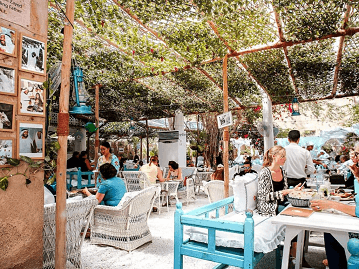News Emirates: Discover King Charles' Contribution to Al Fahidi Historical Neighbourhood in Dubai
King Charles III has always had a profound interest in architecture, a passion that extends beyond British shores. His influence on global architecture is undeniable, and this extends to Dubai, where his involvement in preserving one of the city's oldest districts has left an enduring legacy.
Let's delve into the story of King Charles' impact on Al Fahidi Historical Neighbourhood village ahead of his coronation this weekend.
The History of Al Fahidi Historical Neighbourhood Village
The roots of Al Fahidi Historical Neighbourhood, also known as Al Bastakiya, can be traced back to the 1890s when it was constructed by Persian merchants seeking trade opportunities. The district was named after Bastak, a town in southern Iran. This historical gem remained largely intact until the 1980s when half of it was demolished to make room for office buildings.
In 1989, Dubai Municipality made the decision to raze the remaining village to pave the way for new developments. At this crucial juncture, British architect Rayner Otter, who resided in the area and had renovated his own home, decided to take action. He penned a letter to Prince Charles, appealing for his intervention to save Al Fahidi Historical Neighbourhood.
Prince Charles' Visit to Dubai
Prince Charles, who was the Prince of Wales at the time and married to Princess Diana, visited Dubai in the same year. During his trip, he had the opportunity to witness the historical charm of Al Fahidi Historical Neighbourhood. Impressed by the architectural heritage, Prince Charles suggested to HH Sheikh Rashid bin Saeed Al Maktoum that the Al Fahidi district should be preserved.
HH Sheikh Al Maktoum heeded Prince Charles' advice and halted the demolition plans. In 2005, a comprehensive renovation project transformed Al Bastakiya into the Al Fahidi Historical Neighbourhood village that we cherish today.
A Hub of Culture and Heritage
Today, Al Fahidi Historical Neighbourhood stands as a celebration of Emirati culture and is among Dubai's most popular tourist destinations. Visitors can explore attractions such as the Coffee Museum, Coins Museum, and the Sheikh Mohammed bin Rashid Al Maktoum Centre for Cultural Understanding.
The district is also home to quaint cafes, restaurants, and artistic hotspots. The Arabian Tea House, with its traditional dishes and cozy ambiance, is a standout. Thanks to King Charles' influence, Al Fahidi Historical Neighbourhood hosts the annual Sikka Art Fair, an event that breathes life into the city with creative murals, workshops, and cultural experiences.
Symposium House and Events House add to the cultural richness of Dubai by hosting various cultural events and gatherings.
How to Reach Al Fahidi Historical Neighbourhood
Situated along the Dubai Creek, Al Fahidi Historical Neighbourhood is easily accessible. Ample parking options are available in the nearby Al Seef area. The Sharaf DG Metro Station is a mere 700 meters away, with several bus stops, including Bastakia, Fahidi, and Heritage Village, even closer. Of course, taxis or ride-sharing services like Careem can take you directly to this historic site.
King Charles III's role in preserving the heritage of Al Fahidi Historical Neighbourhood is a testament to his dedication to architecture and cultural preservation, and it continues to enrich the cultural tapestry of Dubai.


